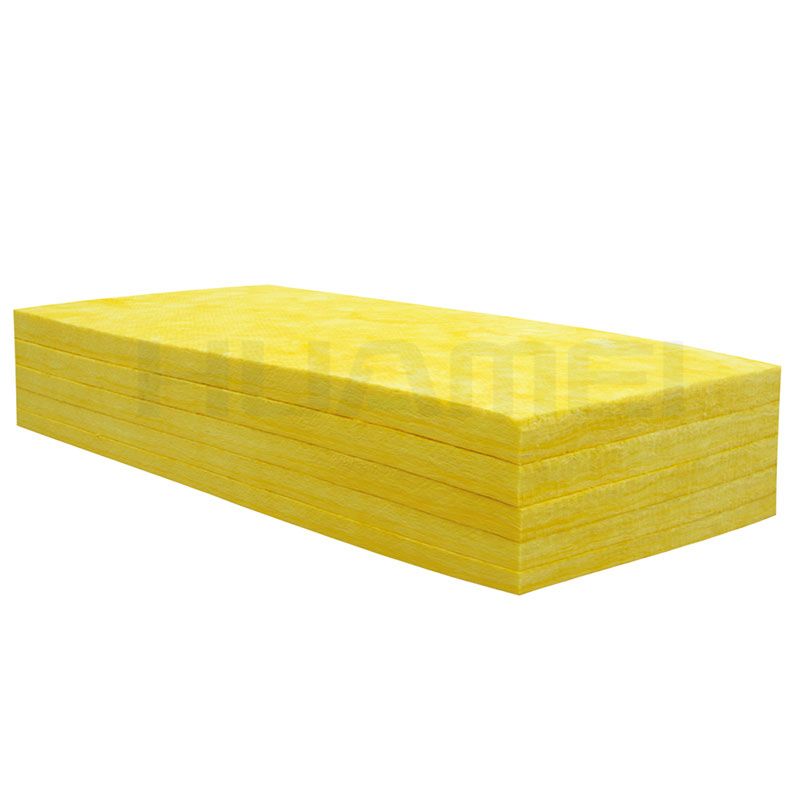Thermal conductivity is the measure of a material's ability to conduct heat. It is an important property to consider when choosing insulation materials for buildings, as materials with low thermal conductivity provide better insulation and reduce heat transfer through walls, roofs, and floors. Glass wool is a common insulation material that is widely used in construction due to its low thermal conductivity and excellent insulation properties.
What is Glass Wool?
Glass wool is a type of insulation material made from glass fibers that are formed into a wool-like texture. The glass fibers are produced by melting silica sand, limestone, and soda ash at high temperatures, which are then blown or spun into fine fibers. The fibers are then mixed with a binder and compressed into mats or rolls, which are then cut to size and used as insulation.
Glass wool has several advantages over other insulation materials, including its low thermal conductivity, excellent acoustic insulation properties, and resistance to fire and moisture. It is also lightweight and easy to install, making it a popular choice for construction projects.
Thermal Conductivity of Glass Wool
The thermal conductivity of glass wool is a measure of its ability to conduct heat. It is expressed in W/mK (Watts per meter Kelvin) and is defined as the rate at which heat flows through a unit area of a material per unit temperature difference. The lower the thermal conductivity, the better the insulation properties of the material.
Glass Wool
The thermal conductivity of glass wool is affected by several factors, including the density of the material, the thickness of the insulation, and the temperature gradient across the material. The thermal conductivity of glass wool typically ranges from 0.030 to 0.045 W/mK, depending on the density and thickness of the insulation.
The density of glass wool insulation affects its thermal conductivity, with higher density materials providing better insulation properties. Glass wool insulation with a density of 10-48 kg/m³ has a thermal conductivity of 0.030-0.040 W/mK, while insulation with a density of 64-96 kg/m³ has a thermal conductivity of 0.040-0.045 W/mK.
The thickness of glass wool insulation also affects its thermal conductivity, with thicker insulation providing better insulation properties. Thicker insulation reduces heat transfer through walls, roofs, and floors, reducing energy consumption and improving comfort levels inside buildings.
The temperature gradient across the material also affects the thermal conductivity of glass wool insulation. The thermal conductivity of glass wool increases with temperature, with higher temperatures causing the material to conduct heat more efficiently. The temperature gradient across the insulation can be minimized by using high-quality insulation materials and ensuring proper installation techniques.
Benefits of Using Glass Wool Insulation
There are several benefits to using glass wool insulation in construction projects, including:
Energy efficiency: Glass wool insulation provides excellent insulation properties, reducing heat transfer through walls, roofs, and floors and improving energy efficiency. This results in lower energy bills and a reduced carbon footprint.
Sound insulation: Glass wool insulation has excellent acoustic insulation properties, reducing noise levels inside buildings and creating a more comfortable living or working environment.
Fire resistance: Glass wool insulation is naturally fire-resistant, providing an additional layer of protection against fire hazards in buildings.
Moisture resistance: Glass wool insulation is resistant to moisture, preventing mold and mildew growth and maintaining healthy indoor air quality.
Sustainability: Glass wool insulation is made from renewable resources, such as sand and recycled glass, and can be recycled after use, reducing waste and promoting sustainability.
Conclusion
The thermal conductivity of glass wool is an important property to consider when choosing insulation materials for construction projects. Glass wool insulation has a low thermal conductivity, making it an excellent choice for reducing heat transfer through walls, roofs, and floors.

评论
发表评论